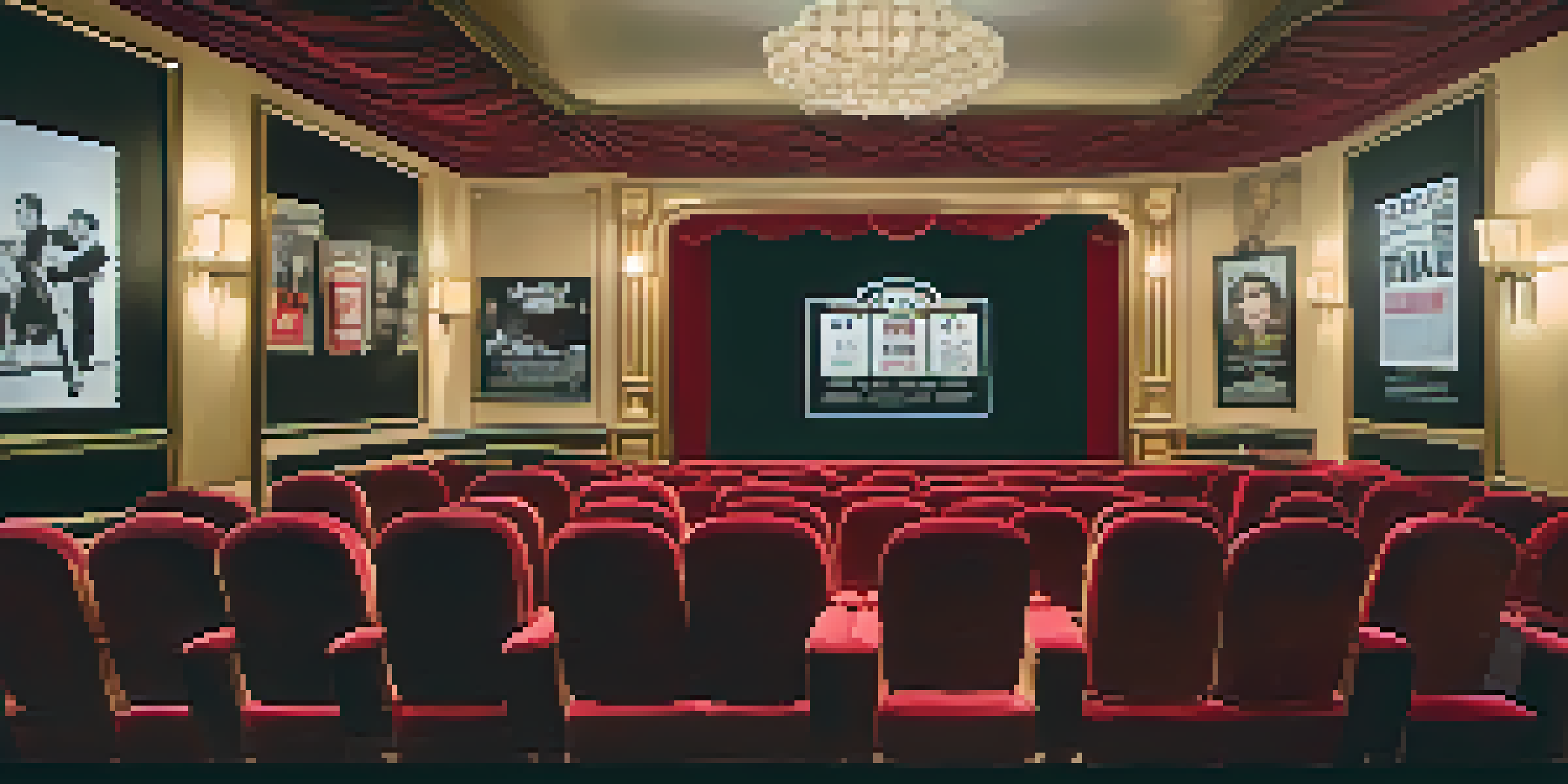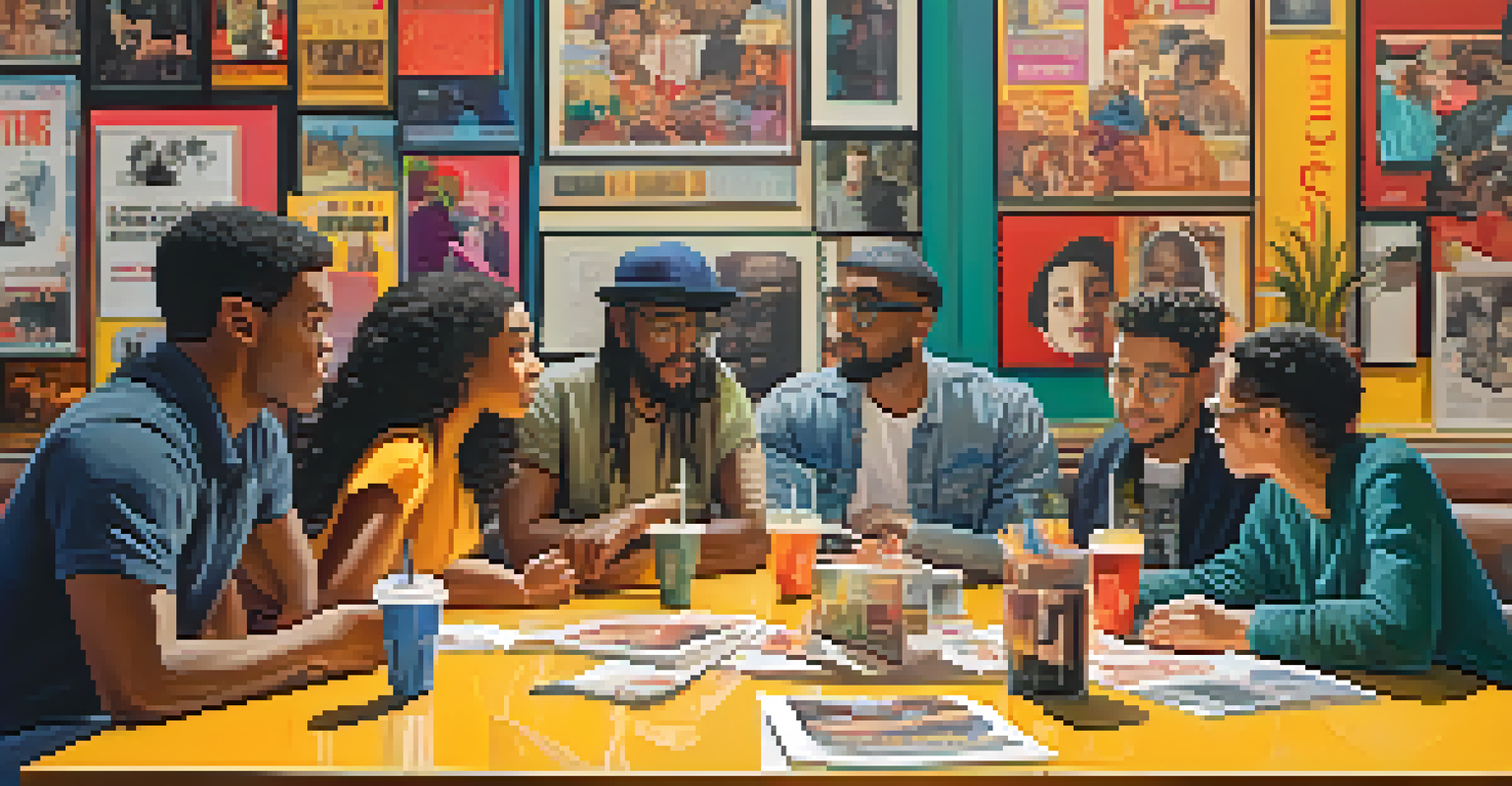Exploring Diverse Perspectives in Film Critique Practices

Understanding the Role of Film Critique in Society
Film critique serves as a lens through which we can examine our culture and society. It can highlight societal norms, provoke discussions, and even inspire change. When critics analyze films, they're not just sharing opinions; they're engaging with the complex narratives that shape our understanding of the world.
Film is a powerful tool for cultural expression, and through critique, we can understand the diverse narratives that shape our world.
By exploring various perspectives in film critique, we enrich the conversation surrounding cinema. Different viewpoints can reveal hidden layers in a film, prompting audiences to consider aspects they may have overlooked. This multifaceted approach encourages deeper appreciation and understanding of the art form.
Ultimately, film critique is more than just about reviewing movies; it's about fostering dialogue. Highlighting diverse perspectives allows for a broader range of voices to be heard, making the critique process more inclusive and reflective of the audience's varied experiences.
The Impact of Cultural Context on Film Interpretation
Cultural context plays a pivotal role in how films are perceived and critiqued. A film that resonates deeply in one culture may not have the same impact in another due to differing social norms and values. This disparity is crucial for critics to consider when analyzing films from diverse backgrounds.

For example, a romantic comedy that showcases a specific cultural tradition might be viewed as charming by some, while others may find it perplexing. By acknowledging these differences, critics can provide a more nuanced understanding of the film's themes and messages. This approach encourages audiences to explore films beyond their own cultural lens.
Film Critique Reflects Society
Film critique serves as a mirror to examine cultural norms and provoke meaningful discussions.
Incorporating cultural context into film critique not only enhances the analysis but also promotes empathy. It allows viewers to appreciate the rich tapestry of global cinema and understand how various cultures tell their stories through film.
Gender Perspectives in Film Critique
Gender plays a significant role in shaping film narratives and critiques. Historically, male voices have dominated film criticism, often leading to a narrow interpretation of films. However, as more diverse voices emerge in the industry, the critique landscape is beginning to reflect a broader range of experiences.
Critique is not just about evaluating films; it's about engaging with the cultural contexts that inform their creation.
By examining films through a gendered lens, critics can uncover biases and stereotypes that may perpetuate harmful narratives. This critical approach encourages filmmakers to create more inclusive and representative stories, fostering a richer cinematic landscape. It also empowers audiences to question the narratives they consume.
Moreover, gender perspectives in film critique can help highlight the importance of strong female characters and diverse storytelling. This not only enriches the viewing experience but also inspires future filmmakers to create films that resonate with a wider audience.
The Role of Race and Ethnicity in Film Critique
Race and ethnicity are central themes in many films, and understanding these elements is vital for effective critique. Film critics who approach movies with a focus on race can help illuminate issues of representation and cultural appropriation. This type of analysis encourages audiences to consider whose stories are being told and how they are portrayed.
For instance, a film that features predominantly white characters may be critiqued differently than one that showcases a racially diverse cast. Critics can examine how these choices impact the narrative and the audience's connection to the film. By prioritizing racial and ethnic perspectives, critiques can drive conversations about inclusivity in the film industry.
Cultural Context Shapes Interpretation
Understanding cultural context is essential for critics to provide nuanced analyses of films from various backgrounds.
Furthermore, exploring race in film critique promotes a greater understanding of the societal issues that films often address. This awareness can inspire audiences to engage with these themes both on and off the screen, fostering a more informed and critical viewing experience.
The Influence of Socioeconomic Status on Film Narratives
Socioeconomic status can significantly shape the narratives portrayed in films, affecting both character development and plot progression. Films often reflect the realities of their creators, which can include their economic backgrounds. Critics who delve into this aspect can provide valuable insights on class dynamics represented on screen.
For example, a film that depicts wealth and privilege may be critiqued for its lack of representation of lower socioeconomic classes. By highlighting these disparities, critics can challenge filmmakers to broaden their narratives to include diverse economic experiences. This can lead to more authentic storytelling that resonates with a wider audience.
Moreover, understanding socioeconomic factors in film critique can foster discussions about access to resources and opportunities both in the film industry and in society at large. This critical perspective empowers audiences to reflect on their own experiences and the narratives that shape their world.
Cross-Cultural Film Critique: Bridging Perspectives
Cross-cultural film critique involves analyzing films from different cultures and comparing their themes, narratives, and styles. This practice not only broadens the critic's understanding but also fosters dialogue between cultures. By examining films from various countries, critics can uncover unique storytelling techniques and cultural nuances.
For instance, comparing a Hollywood blockbuster with a critically acclaimed foreign film can reveal contrasting approaches to storytelling and character development. Such analyses encourage audiences to recognize the diversity of cinematic expression and appreciate films that may differ from their own cultural norms.
Diversity Enriches Film Critique
Embracing diverse voices in film critique fosters a more inclusive dialogue and enhances the richness of cinematic analysis.
Additionally, cross-cultural critique can promote global understanding and empathy. By exploring how different cultures approach similar themes, critics can help audiences find common ground in storytelling, enriching their viewing experience and fostering a more interconnected world.
The Future of Film Critique: Embracing Diverse Voices
As the film industry continues to evolve, so too must the practice of film critique. Embracing diverse voices—be it through gender, race, or cultural background—will enhance the richness of film analysis. Critics who prioritize inclusivity can provide more comprehensive insights that resonate with a broader audience.
The rise of social media and digital platforms has democratized film critique, allowing more voices to be heard. This shift creates opportunities for underrepresented critics to share their perspectives, enriching the dialogue surrounding cinema. As a result, audiences are exposed to a wider array of opinions and interpretations.

Looking ahead, the future of film critique lies in collaboration and openness. By valuing diverse perspectives, critics can foster an environment that encourages dialogue and exploration, ultimately leading to a more vibrant and inclusive film landscape.